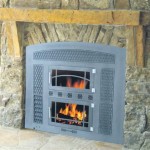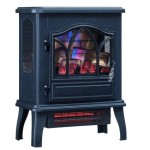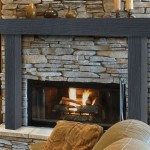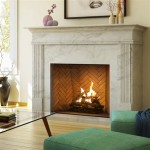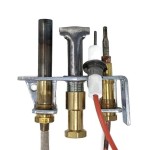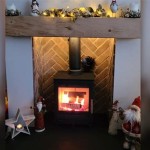DIY Fireplace Mantel Plans: A Comprehensive Guide
A fireplace mantel serves as a focal point within a room, offering both aesthetic appeal and functional utility. Constructing a mantel oneself provides a cost-effective way to personalize the living space and tailor the design to specific preferences. Numerous do-it-yourself (DIY) plans are available, ranging from simple, minimalist designs to more elaborate, traditional styles.
The process of building a fireplace mantel involves careful planning, material selection, and precise execution. A well-executed plan is paramount to ensuring structural integrity, adherence to safety codes, and the desired aesthetic outcome. This article aims to provide a comprehensive overview of DIY fireplace mantel plans, covering key considerations and practical guidance for successful implementation.
Planning and Design Considerations
Before embarking on the actual construction, dedicating sufficient time to planning and design is crucial. This phase encompasses several key aspects, including style selection, dimensional assessment, material choice, and adherence to safety regulations. Ignoring these preliminary steps can lead to unforeseen challenges and potentially compromise the final result.
The initial step involves determining the desired style and aesthetic of the mantel. Options range from rustic and farmhouse-inspired designs utilizing reclaimed wood to sleek and modern interpretations featuring clean lines and minimalist detailing. Considering the existing architectural style of the home and the overall décor of the room is essential to ensure cohesive integration. Visualizing the finished product through sketches or digital renderings can be beneficial in solidifying the design concept.
Dimensional assessment is another critical aspect of the planning phase. Accurate measurements of the fireplace opening, the surrounding wall area, and the available space are necessary to determine the appropriate dimensions of the mantel. Consider the height of the mantel above the firebox, ensuring it meets safety requirements and provides adequate clearance for heat dissipation. Building codes often specify minimum distance requirements between the top of the fireplace opening and combustible materials, such as wood mantels. Consult local building codes and manufacturer guidelines for specific requirements.
Material selection plays a significant role in the overall appearance, durability, and cost of the mantel. Common materials include wood, stone, brick, and metal. Wood offers versatility in terms of design and finish, while stone and brick provide a more traditional and substantial aesthetic. Metal, such as steel or wrought iron, can be used for modern or industrial-inspired designs. Consider the weight of the chosen material and its impact on the structural support required for the mantel. Different wood species offer varying levels of hardness, grain patterns, and resistance to decay. For example, hardwoods like oak and maple are more durable than softwoods like pine and fir. Reclaimed wood can add character and rustic charm to a mantel, but it may require additional preparation and treatment to ensure stability and prevent insect infestation.
Safety regulations are of paramount importance when designing and constructing a fireplace mantel. As previously mentioned, adhering to minimum distance requirements between the mantel and the firebox is crucial to prevent fire hazards. Furthermore, consider the weight-bearing capacity of the wall and the method of attachment used to secure the mantel. If the mantel is heavy, additional structural support, such as brackets or corbels, may be necessary. Ensure that all materials used are fire-resistant or treated with a fire-retardant coating. Consult local building codes and regulations to ensure compliance with all applicable safety standards.
Detailed Construction Steps
Once the planning phase is complete, the construction process can commence. While specific steps may vary depending on the chosen design and materials, certain fundamental principles apply to most DIY fireplace mantel projects. These include preparing the materials, constructing the mantel components, assembling the mantel, and finishing the surface.
Material preparation involves cutting the chosen materials to the specified dimensions according to the design plans. Precision is essential to ensure accurate alignment and a professional-looking finish. Utilizing power tools, such as a circular saw, miter saw, and table saw, can significantly improve the efficiency and accuracy of the cutting process. Always wear appropriate safety gear, including eye protection, hearing protection, and dust masks, when working with power tools.
Constructing the mantel components typically involves assembling various pieces of wood, stone, or metal to form the mantel shelf, the mantel legs or supports, and any decorative elements. Woodworking techniques, such as joinery methods (e.g., mortise and tenon, dovetail, rabbet joints), are often employed to create strong and durable connections between the wood pieces. Stone and brick mantels may require the use of mortar or adhesive to bond the individual units together. Metal components can be welded or fastened together using screws or bolts. The specific construction techniques will depend on the chosen materials and the complexity of the design.
Assembling the mantel involves connecting the previously constructed components to form the complete mantel structure. This may involve attaching the mantel shelf to the mantel legs or supports, securing decorative elements, and ensuring that all joints are properly aligned and fastened. Use appropriate fasteners, such as screws, nails, or bolts, to provide adequate strength and stability. Check for squareness and levelness throughout the assembly process to ensure a professional-looking result. Shims can be used to compensate for any unevenness in the wall or floor.
Finishing the surface of the mantel enhances its aesthetic appeal and protects it from damage. This may involve sanding, staining, painting, or applying a sealant. Sanding smooths the surface of the wood and prepares it for finishing. Staining enhances the natural grain pattern of the wood and adds color. Painting provides a uniform color and protects the wood from moisture and scratches. Sealants, such as polyurethane or varnish, provide a durable and water-resistant finish. Choose a finish that complements the overall décor of the room and provides the desired level of protection. Apply multiple coats of finish, allowing each coat to dry thoroughly before applying the next. Lightly sand between coats to create a smooth and even surface.
Installation Techniques
The final step in the DIY fireplace mantel project is the installation. The installation process varies depending on the type of wall, the weight of the mantel, and the method of attachment. Common installation techniques include using brackets, screws, or a combination of both. Ensuring a secure and stable installation is crucial for safety and longevity.
Before installing the mantel, locate the wall studs using a stud finder. Wall studs provide a solid anchor point for attaching the mantel and ensuring that it can support the weight of the mantel and any decorative items placed on it. Mark the location of the studs on the wall. If the mantel is particularly heavy, consider adding additional support, such as a ledger board attached to the wall studs. A ledger board is a piece of wood that is attached to the wall studs and provides a horizontal surface for the mantel to rest on.
Brackets are commonly used to support the weight of the mantel and provide a decorative element. Choose brackets that are appropriately sized and rated for the weight of the mantel. Attach the brackets to the wall studs using screws or bolts. Ensure that the brackets are level and evenly spaced. The number of brackets required will depend on the weight and size of the mantel. For lighter mantels, two brackets may be sufficient. For heavier mantels, three or more brackets may be necessary.
Screws are another common method of attaching a mantel to the wall. Use screws that are long enough to penetrate deeply into the wall studs. Countersink the screws so that the heads are flush with the surface of the mantel. Fill the screw holes with wood putty or filler and sand smooth. Paint or stain the filled holes to match the surrounding surface. Alternatively, decorative screw covers can be used to conceal the screw heads.
Leveling the mantel is essential for aesthetic appeal and functionality. Use a level to ensure that the mantel is perfectly horizontal. Shims can be used to compensate for any unevenness in the wall. Place shims behind the mantel until it is level. Once the mantel is level, secure it to the wall using screws or bolts. Recheck the levelness after securing the mantel to ensure that it has not shifted during the installation process.
Once the mantel is installed, inspect it carefully to ensure that it is securely attached to the wall and that all joints are properly aligned. Test the stability of the mantel by applying gentle pressure to various points. Address any loose or unstable areas before placing decorative items on the mantel. Consider adding a fire-resistant backing material behind the mantel to protect the wall from heat. This is particularly important if the mantel is located close to the firebox.
Following these steps will contribute to a robust and visually pleasing fireplace mantel that enhances the ambiance of the living space. Always prioritize safety and consult with professionals when uncertain about any aspect of the construction or installation process.

Faux Fireplace Mantel Surround Rogue Engineer

Elite Construction Of Jax Inc Custom Decorative Mantels Fireplace Mantel Surrounds Molding Design

How To Build A Diy Fireplace Mantel Fixthisbuildthat

Faux Fireplace Mantel Surround Rogue Engineer

Faux Fireplace Mantel Surround Rogue Engineer

Fake Fireplace Mantle Built From Pine Boards Ana White

How To Build A Diy Fireplace Mantel Fixthisbuildthat

Easy Diy Fireplace Mantel Tutorial Jessica Welling Interiors

Easy Fireplace Mantel Diy

How To Make An Easy Diy Fireplace Mantel Sprucing Up Mamahood

